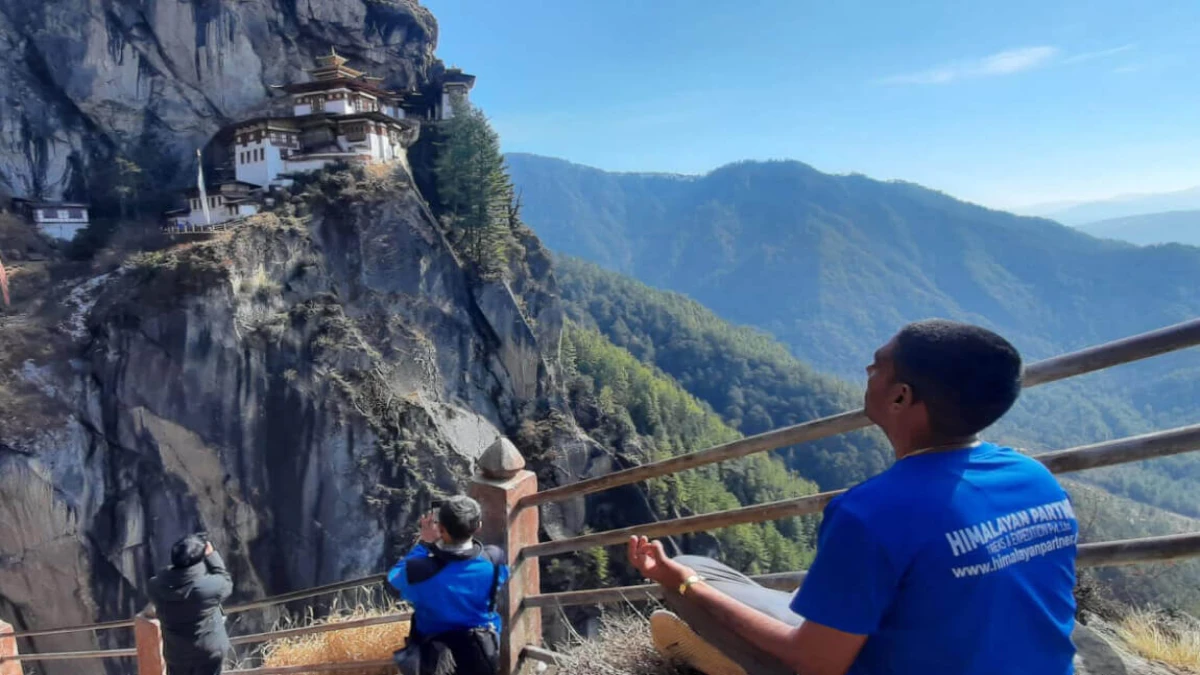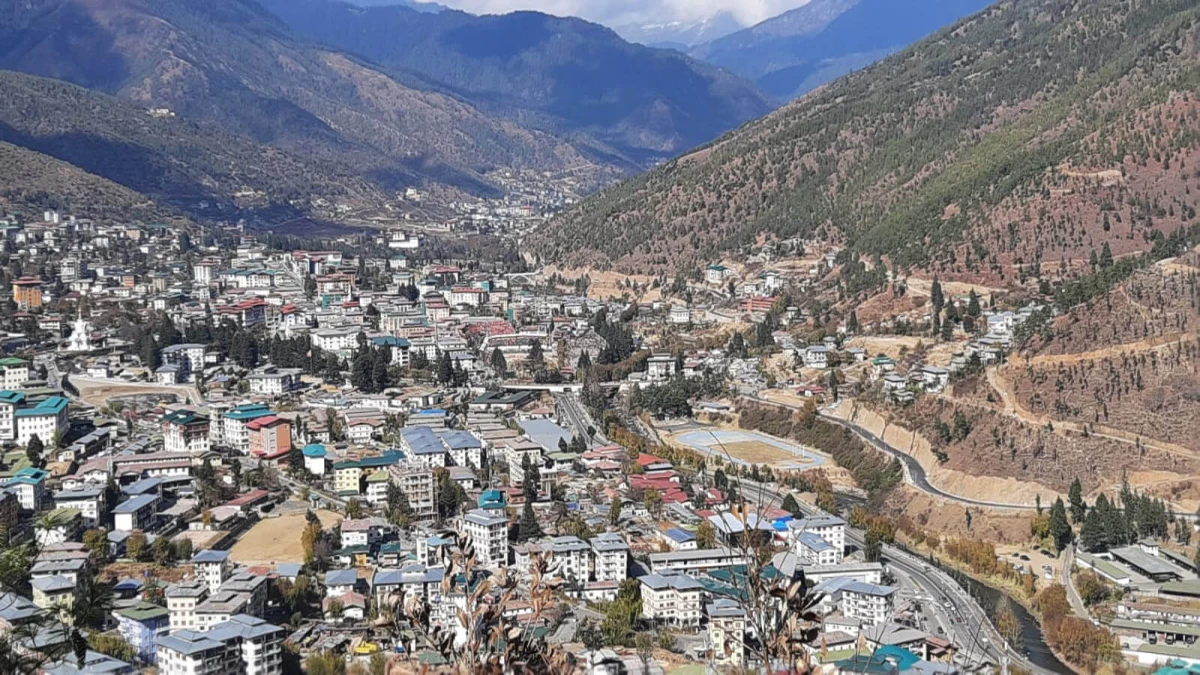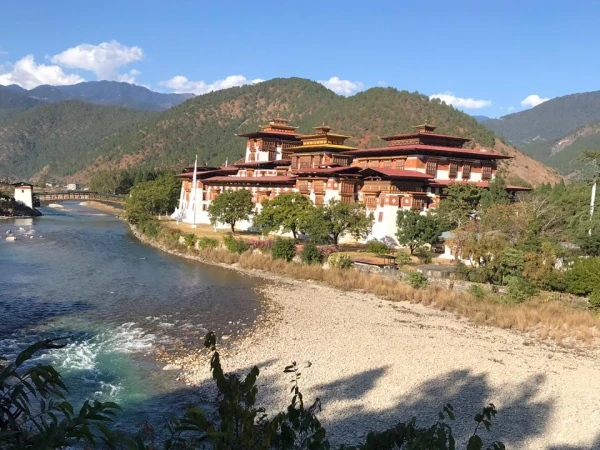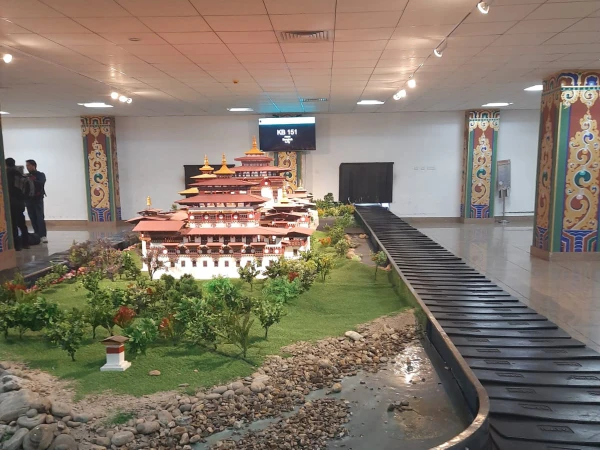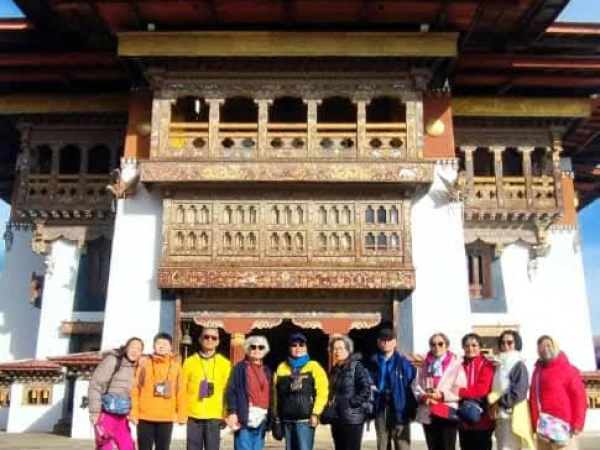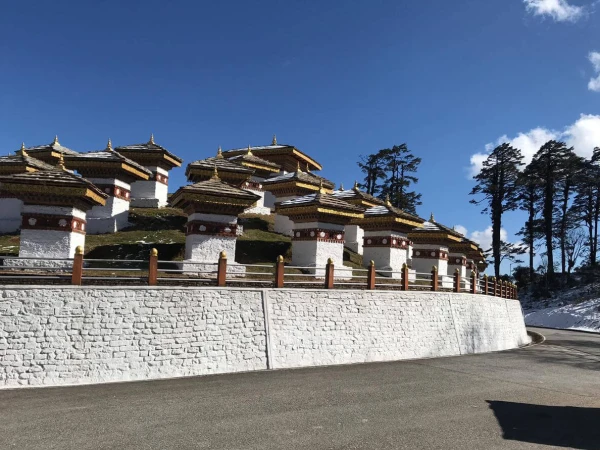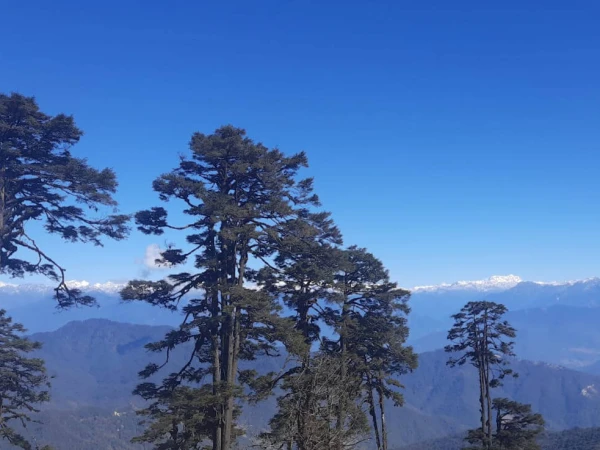Highlights of Bhutan Tour
- Take a scenic flight from Kathmandu to the Paro International Airport in Bhutan. If the weather is clear, then you might catch a glimpse of Mount Everest and other stunning Himalayan peaks.
- Get a chance to hike the famous Tiger’s Nest Monastery (Taktsang) in Paro. It is a sacred site that is perched on the edge of a cliff 3,000 feet above the valley.
- Explore Thimpu, which is the beautiful and peaceful capital city of Bhutan. It is a place where ancient culture meets modern life.
- Discover the stunning Punakha Dzong, one of the beautiful fortresses of Bhutan. It is the place where the Pho Chuu and Mo Chhu river meets.
- Get chance to experience Bhutanese culture and language. You'll get to learn basic Dzongkha Greetings, visit local temples, and witness the daily life of Bhutan that reflects unique Buddhist values.
- Taste the local dishes like Ema Datshi (chili and cheese), red rice, and butter tea.
- Enjoy peaceful walks in clean and green villages surrounded by rice fields, pine forests, and prayer flags.
- Experience Bhutan's warm hospitality and unique lifestyle focused on Gross National Happiness(GNS), which i a philosophy that guides everything from governance to daily life.
Overview of Bhutan Tour
Did you know? Bhutan is called the crown jewel of Himalayas. And it has a reason behind it. Bhutan is one of the most preserved and peaceful countries on the earth, Nestled deep in the Himalayas between India and China. It is guided by its unique philosophy of Gross National Happiness. As travel experts, we’ve explored Bhutan’s hidden valleys, monasteries, and mountains. So, we clearly know what makes this trip unforgettable.
The moment you step in Paro, you’ll get to know this place is different. There is no chaos, no traffic lights, just mountains, monasteries, peace, and fresh air. In a short time, you'll get to know a lot about Bhutan and Bhutanese people. From listening to the monks chant inside ancient mountains to trekking to beautiful snow-capped mountains and seeing Himalayan wildlife such as the red panda and crane. Your 5-days Bhutan journey is a perfect blend of serenity and light adventure. Guided by experienced local guides who know Bhutan very well, you’ll be exploring beautiful places like Punakha Dzong, bright streets of Thimphu, and hiking to the famous Tiger’s Nest Monastery.
Our Bhutan Tour package is designed sincerely by combining the local expertise and ethical travel values to give you the best trip that you’ll carry with you forever. Whether you’re a solo traveler or a group searching for Himalayan beauty or spiritual connections, Bhutan welcomes you with an open heart. And so do we.
Why should you do Bhutan tour in 2025 and 2026?
You should visit Bhutan, not because you’re bored and want to travel to another destination. It is because Bhutan is the world’s last Himalayan Kingdom. Here, you can see ancient traditions, untouched natural beauty, and a deep sense of peace. Like other countries, Bhutan doesn’t measure success by GDP, but it measures by Gross National Happiness. And this, you can actually feel in the warmth of people and the silence of monasteries. From the mountains to ancient Dzongs, Bhutan feels sacred and genuine.
Beyond the rich culture, Bhutan leads in environmental protection. It is the only carbon-negative county in the world because this country runs on clean energy, bans plastic bags and absorbs more carbon than it emits. Bhutan stands out of all countries. When travelers seek meaningful and mindful journeys, Bhutan invites you to see its beauty and become a part of its story. So, join our Bhutan tour in 2025 and book a seat for Bhutan tour in 2026.
Responsible and Sustainable Tourism in Bhutan
In Bhutan, travel is not only about visiting new places, but it’s about protecting them. As mentioned earlier, Bhutan is the only carbon negative country in the world. Bhutan limits visitor numbers through its “High Value, Low Volume” policy. This ensures nature, culture, and communities are protected. That’s why every visitor pays a Sustainable Development Fee (SDF), which directly supports free education, healthcare, environmental preservation, and cultural heritage.
As travel professionals, we have seen firsthand how your journey contributes to something bigger in Bhutan. Trekking trails are clean here, plastic use is banned, and every place you visit is sustainably maintained. Responsible tourism is like part of their lifestyle here. When you visit Bhutan, you don’t just make memories, you also support a country that protects its nature and measures progress by happiness, not wealth.

